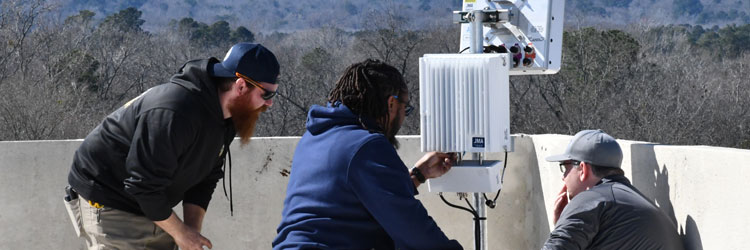In the aftermath of the 9/11 terrorist attacks, it became very clear that in-building communications needed to be improved upon, so as to allow high-quality communications between occupants and first responders. Accordingly, in 2009 an initial set of standards were published in both the International Fire Code (IFC), and the National Fire Protection Association (NFPA) code. Updates to the standards are continuously being made and adoption by local authorities varies. The most common of the standards are summarized in the text below. Specific code compliance requirements with regards to public safety communication systems should however be obtained from local authorities.
General Requirement
Any radio enhancement system (RES) or bi-directional amplifier (BDA) used within a building must not cause interference with the public safety radio system, and must instead be wholly compatible with such systems.
Radio Coverage
In those locations of a building defined as ‘critical areas’, there must be 99% coverage for communications, while at those locations defined as ‘general areas’, there need only be 90% coverage. Critical areas are defined as those housing emergency command centers, standpipe cabinets, elevator lobbies, and exit routes, as well as other areas deemed critical by the authority having jurisdiction (AHJ). General areas are defined as all those not included among critical areas.
Signal Strength
Both inbound and outbound signal strengths are required to be at a level of -95dBm. Signal strength which is measured at the site of a repeater must account for the gain of amplifiers between receivers and antennas, so that the -95dBm value can be translated to the appropriate carrier-to-noise ratio at the receiver location. Any building which meets the requirements of radio coverage and signal strength without the use of BDA’s is not required to have signal boosters installed.
System Frequencies
All BDA’s in use in a building must have the capability of re-transmitting Public Safety frequencies, which will be specified by the relevant public safety agency or the authority having jurisdiction.
System Components
All signal boosting equipment such as BDA’s, are subject to FCC approval, and must be operated in compliance with accepted standards put forth by the Federal Communications Commission.
Power Supplies
Since any building on fire is vulnerable to losing its primary source of power, a secondary source of power is mandatory. Buildings must be equipped with either a standalone generator with automatic failover, or a 12-hour battery capable of powering BDA’s within the building. Generators must be capable of sustained operation following a power failure.
System Monitoring
Some kind of automatic monitoring system is required in a building, with a dedicated command panel situated in the emergency center, and it must be capable of detecting and triggering an alarm when there is a failure in signal boosting, or when antenna malfunctions occur.
System Testing
There are three types of testing which must be performed in accordance with codes and requirements: annual testing, system testing by the building owner, and acceptance testing by the authority having jurisdiction. The scope of this testing should include voice quality evaluations, building grid coverage, and signal strength at various critical locations.
Building Maintenance
Owners of buildings are required to have service contracts for regular maintenance and emergency repairs, with response time for repairs guaranteed to be within two hours of notification.
As stated earlier these are general requirements. Use them to as generic guidelines to understand the potential scope and requirements of a public safety communications system. Check with local authorities to determine the specific requirements for a particular building.
For more information, obtain a copy of the International Fire Code or the National Fire Alarm and Signaling Code part 72.
For more information on Pierson Wireless can help you, do not hesitate to contact us.























Leave A Comment